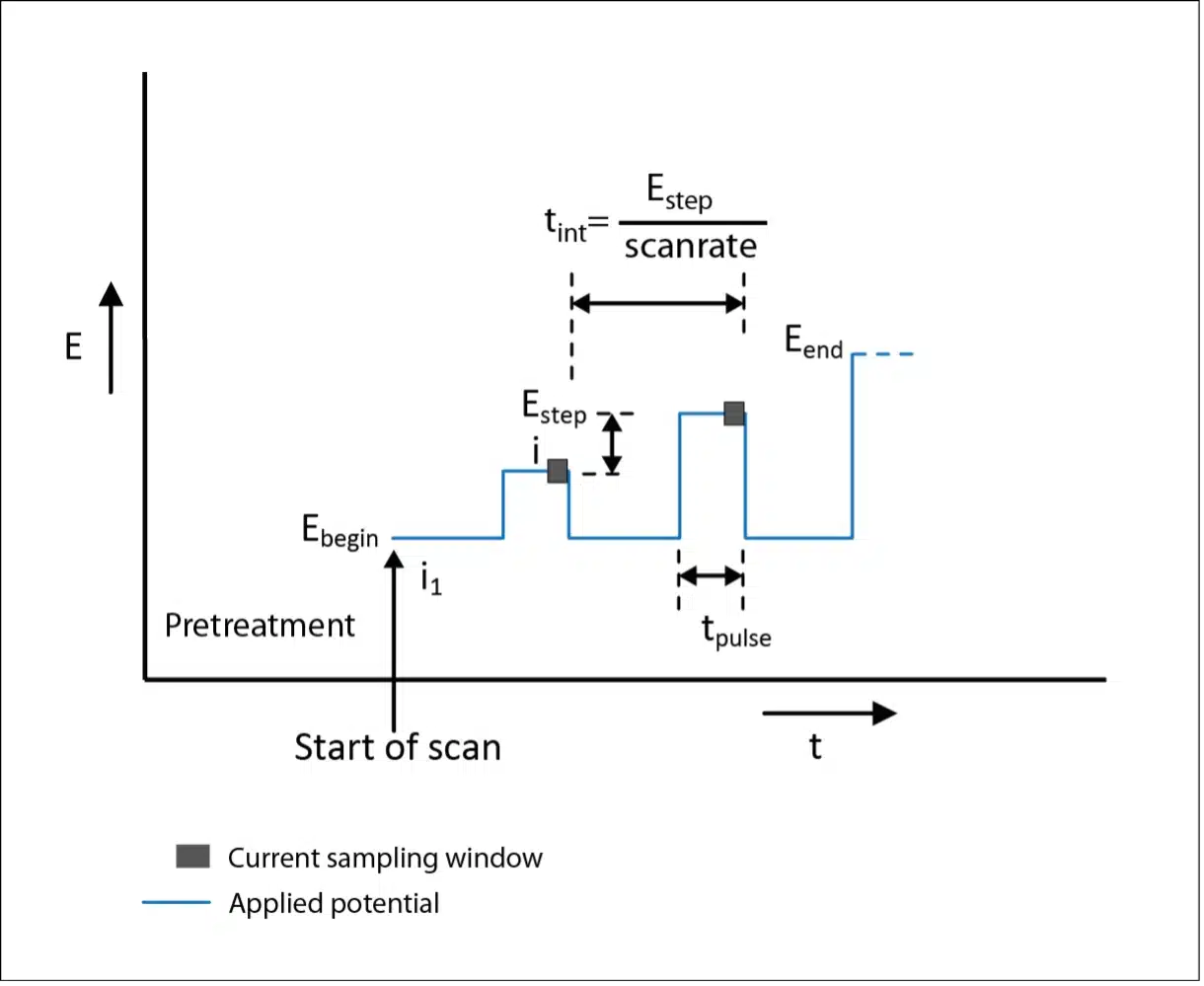Reverse Normal Pulse Voltammetry
Reverse Normal Pulse Voltammetry is an electrochemical technique, usually called Normal Pulse Voltammetry at PalmSens. With Reverse Normal Pulse Voltammetry the influence of diffusion limitation on your I-E curve (Cottrel behavior) is removed.
Description
In Normal Pulse Voltammetry (NPV) a potential scan is made by making constantly larger potential steps of pulse. NPV is normally more sensitive than LSV, since the diffusion layer thickness will be smaller, resulting in a higher faradaic current.

Measurement
At the first potential step, the pulse is equal to E step, at next twice the value E step, until the end where the pulse is E begin + n * E step is equal to E end, where n = (E end – E begin) / E step + 1.
The pulse time t pulse is specified by the user, but must not exceed half the interval time.
So the t pulse <= E step / (scan rate * 2).

